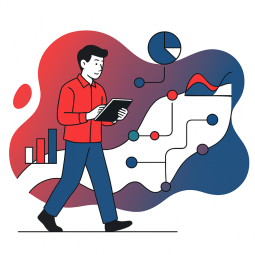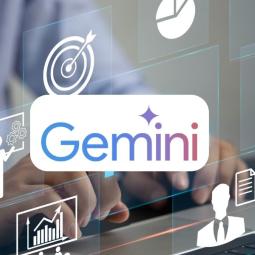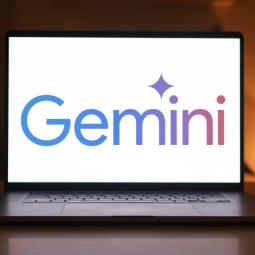With so many different AU tools out there, and more popping up every day, it can be hard to choose the right one. Depending on the task that you are looking at, there is probably an AI designed to help you. To help make the decision easier, you can use the SIMPLE method.
The SIMPLE method
S – Source Assessment
- Do you already have the tool for the job?
- Do you need a specialised solution?
I – Identify Core Problems
- Does the tool solve a specific problem?
M – Match to Tool Type
- Is it built in?
P – Privacy & Platform
- Is the tool private?
- Does it match your company’s privacy policy?
L – Learn & Launch
- Is there a free trial/version?
- Are there learning resources available?
E – Evaluate Impact and Iterate
- Do the results match what you need? Is it succeeding in what you need it to do?
The list below has been created as a sample of the different AI tools available. We'd recommend clicking on each link and having a look through what features are available with each AI tool. If you wanted to have deeper search into what’s available, you could use There’s An AI For That, a search engine for AI. We also have a list of AI powered tools available specifically for NFPs. There are a number of different AI tools, so make sure that you do your research and find what best fits your organisation’s needs.
Chatbots and text generation
ChatGPT – One of, if not the most popular and well-known AI Large Language Models (LLM), ChatGPT allows users to generate ‘humanlike’ text responses. There are options for both free and paid models. ChatGPT can also generate images and video, and perform ‘deep research’, which provides more robust responses to prompts and includes references for where it has sourced the information from, although this is currently only available as part of the paid model. You may need to create an account if you are wanting more involved answers to your prompts.
CoPilot – Integrated directly into the Microsoft Office suite of products (Word, Teams, Office), CoPilot acts as an AI assistant, able to sort, collate data and generate repots based on inputs. Like other LLMs, text generation is available, helping you to create drafts of work as a starting point.
Perplexity – Perplexity focuses on the deep research side of text generation and can be used to help you in web searches or research tasks. Perplexity also provides references so you can follow up on where the information has been pulled from. It should be noted that Perplexity provides answers with more detail than those provided by some other AI, and the language and tone is oftentimes more formal, so it may be useful to review any answers to make sure that it fits the tone of your organisation.
Claude – Where Perplexity is often more formal in tone, Claude offers more natural responses, in a tone that closer matches your own writing style. Claude also offers the ability to share prompts and answers with your wider team, all in the same response thread inside the program. There are different levels of plans, so be sure to review each one to see if it suits your needs.
Gemini – Gemini is Google’s AI assistant, which integrates with the Google Workspace. One of the main benefits of this, is that you don’t need to switch between Google apps (such as Gmail, Google Maps and Google Docs) to take advantage of the benefits of Gemini, because it links throughout the Google Workspace platform.
Image Generation
Canva Dream Lab – Canva Dream Lab is a feature of Canva that allows users to generate images based on prompts. Users can either describe the image that you want to create or upload an image to base the generation on. Canva also provide some example images for inspiration. Being in the Canva environment means that once generated, the image can be used across a range of Canva projects you might be working on.
Ideogram – Similar to Canva Dream Lab, Ideogram generates images based on written prompts, but instead of just the one image, Ideogram generates four images allowing you to choose which one best suits your needs. It may be worth mentioning, that as of writing, you aren’t able to integrate your own logo or photo without the AI reinterpreting them, so if you were looking to add a logo to any images generated, you will have to do so in another app or program.
Audio
Fireflies – Fireflies is a note taking AI that transcribes audio and converts it into text. There is also a Google Chrome extension that allows you to record, transcribe and summarise Google Meet calls without having an extra participant join the meeting as a bot. Fireflies also boasts auto-language detection, with over 100 languages programmed in.
AudioPen – Another on the list of audio transcription tools is AudioPen. This AI converts audio files and voice notes into text. Any audio notes that are uploaded to AudioPen are deleted from the server, so if you were looking to dictate notes and want to keep the recording, you may need to save the audio file elsewhere. AudioPen do offer the ability to download audio that has been directly recorded in the app, however, this is only available on their paid subscription.
Want more resources?
If you would like to take the SIMPLE method further, or want to learn more about what options for AI tools are available, you can watch our ‘Cutting through the noise – finding the right AI tool for the job’ webinar, and explore further resources.
There’s also a range of other IT products available – review the entire Connecting Up product range here.





Status message
Thanks for rating this guide.